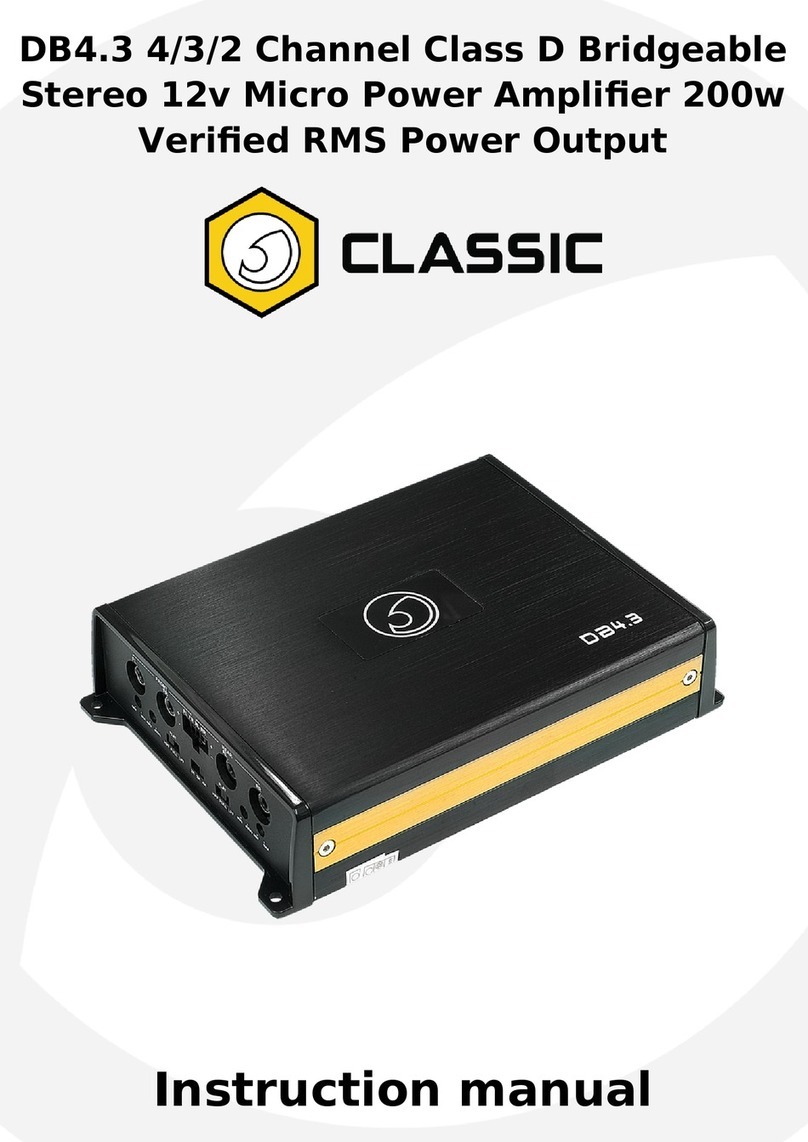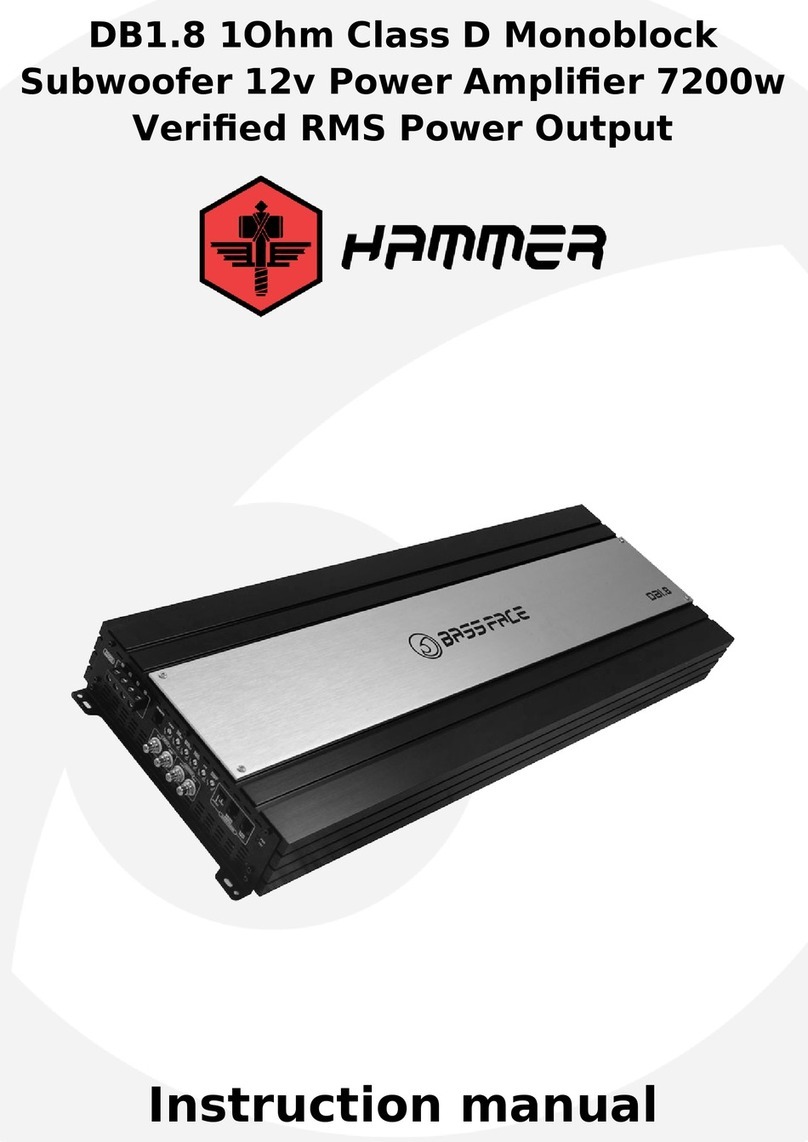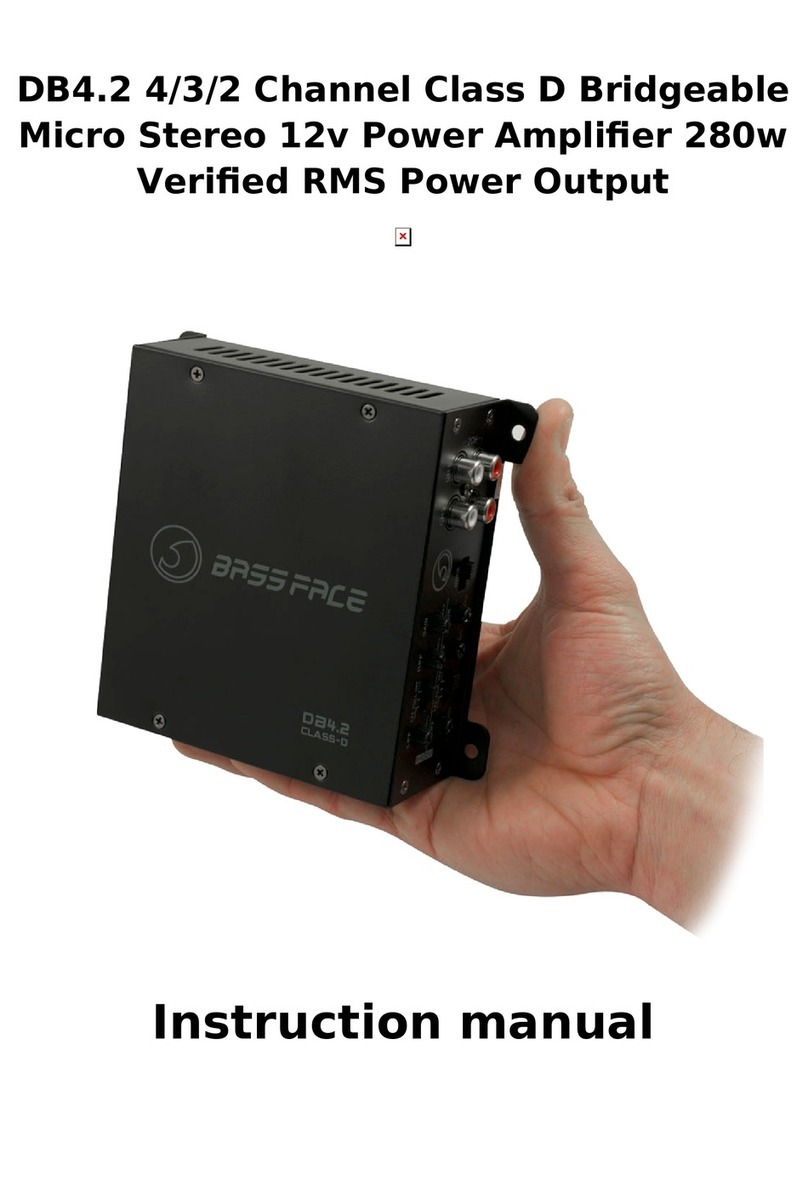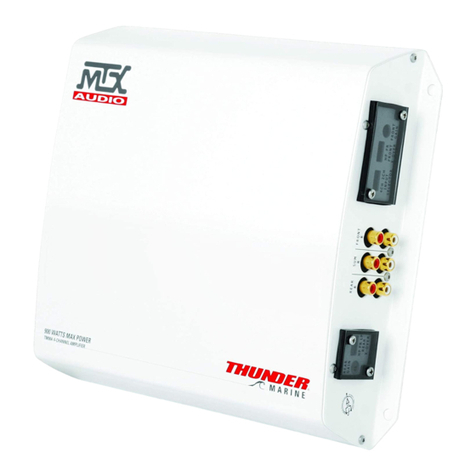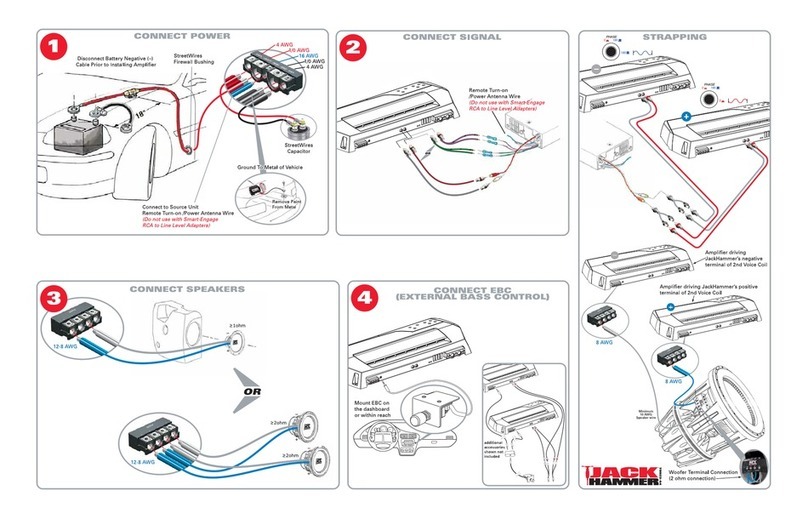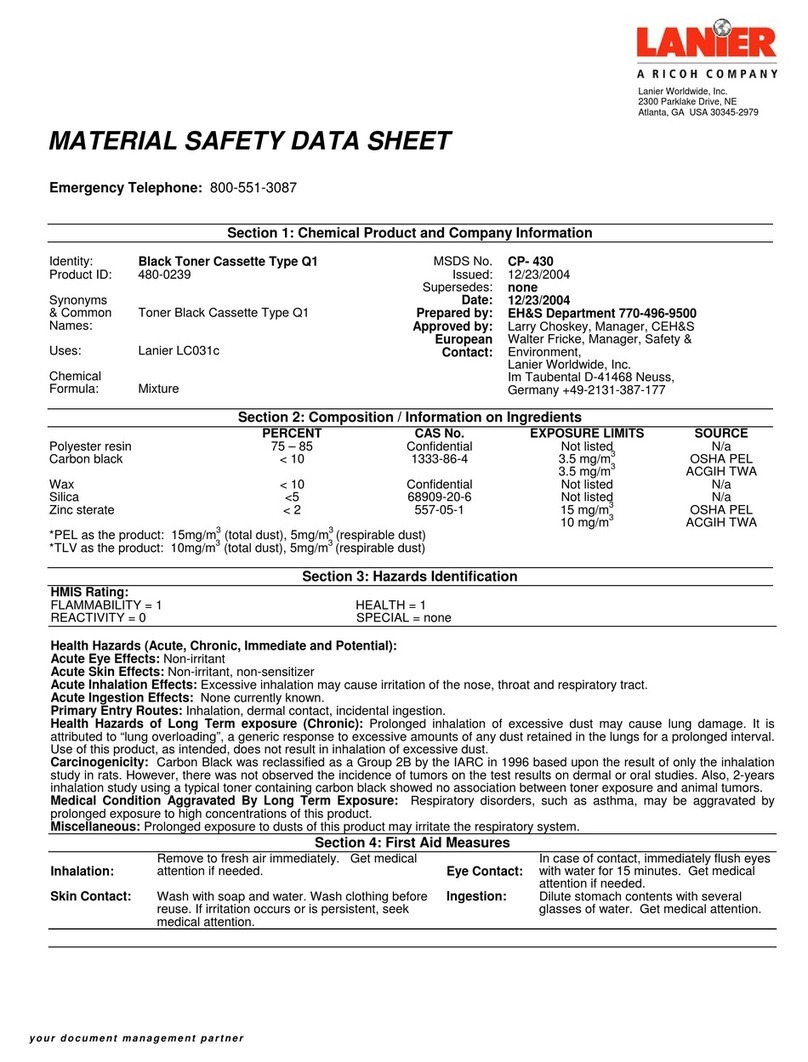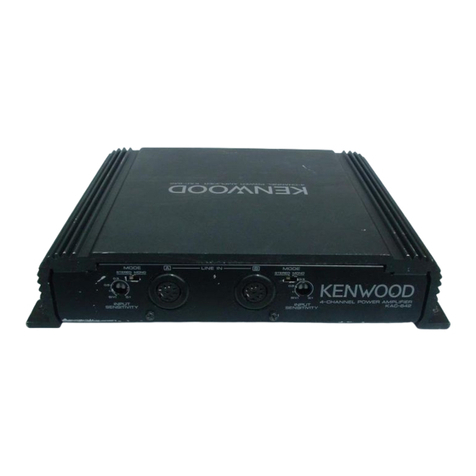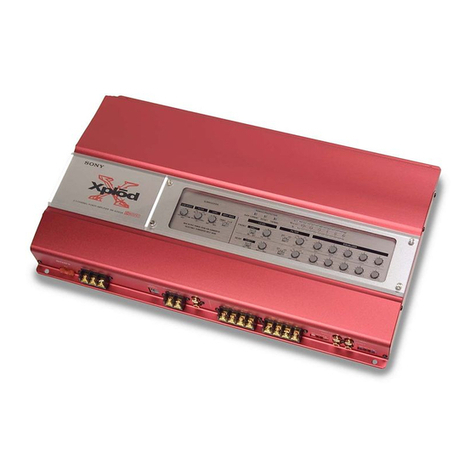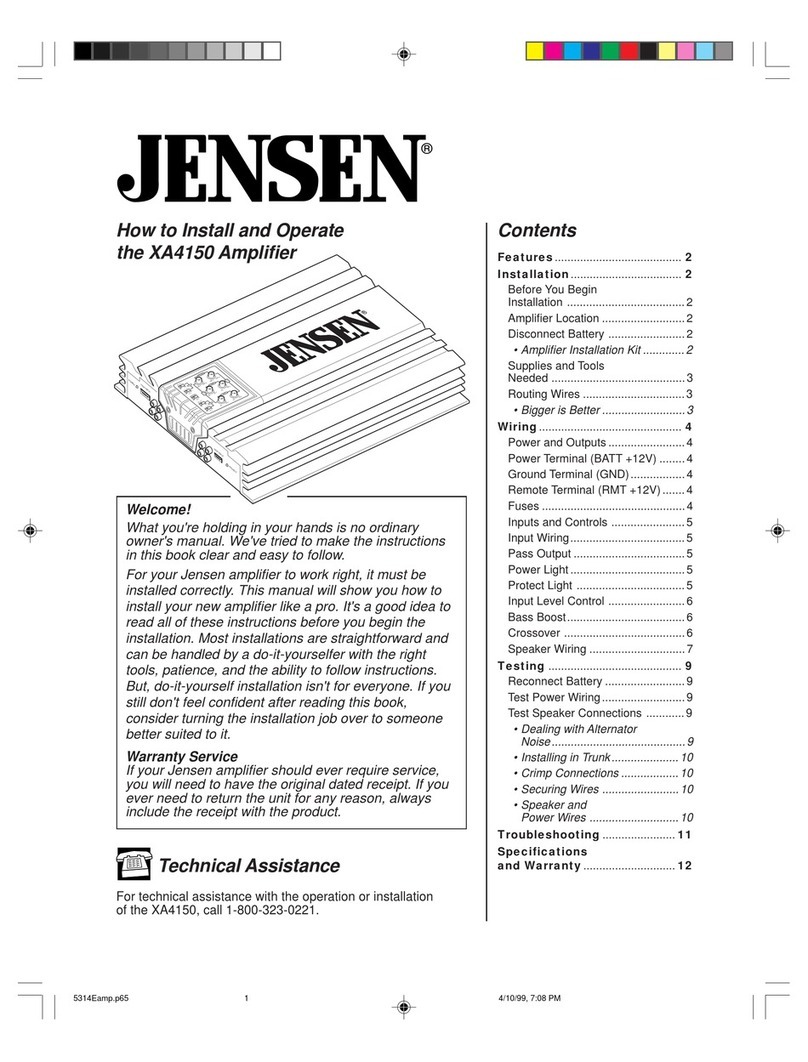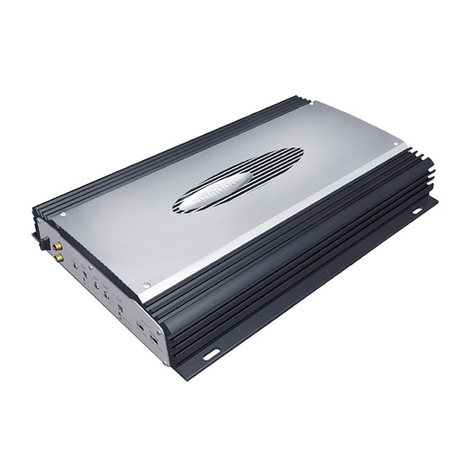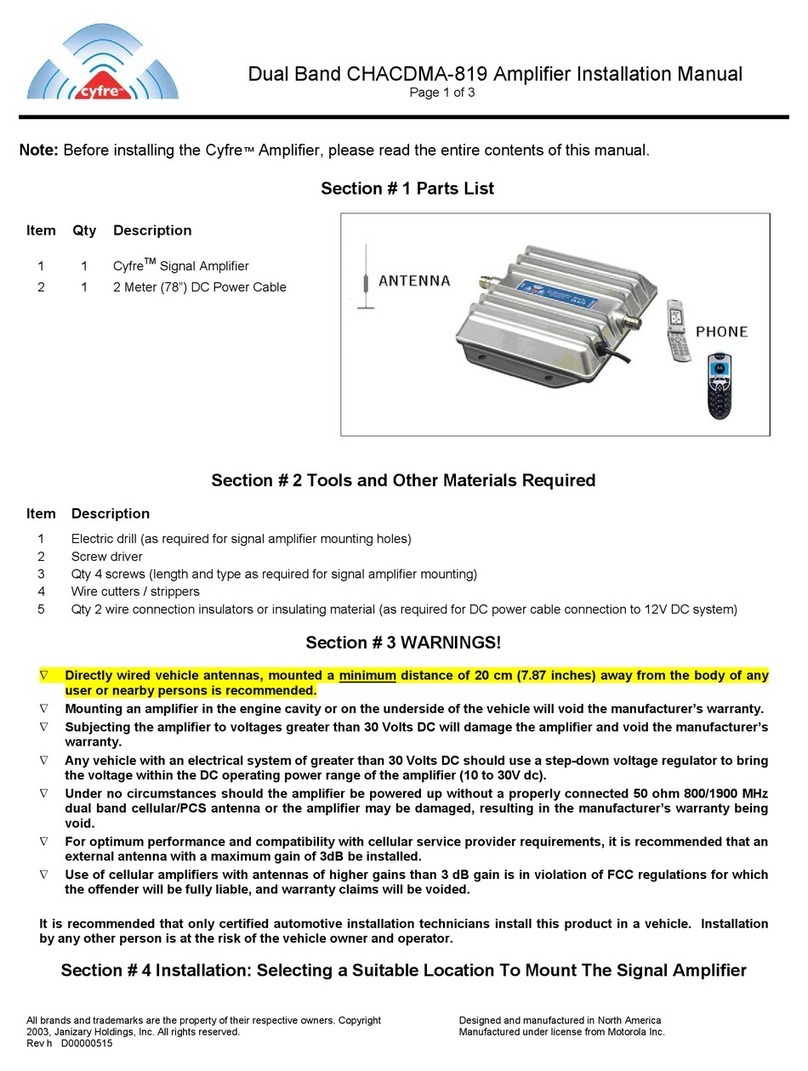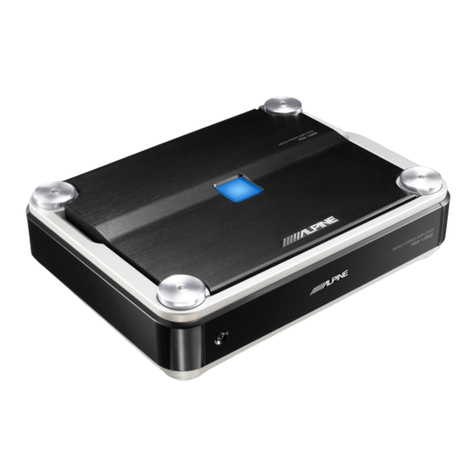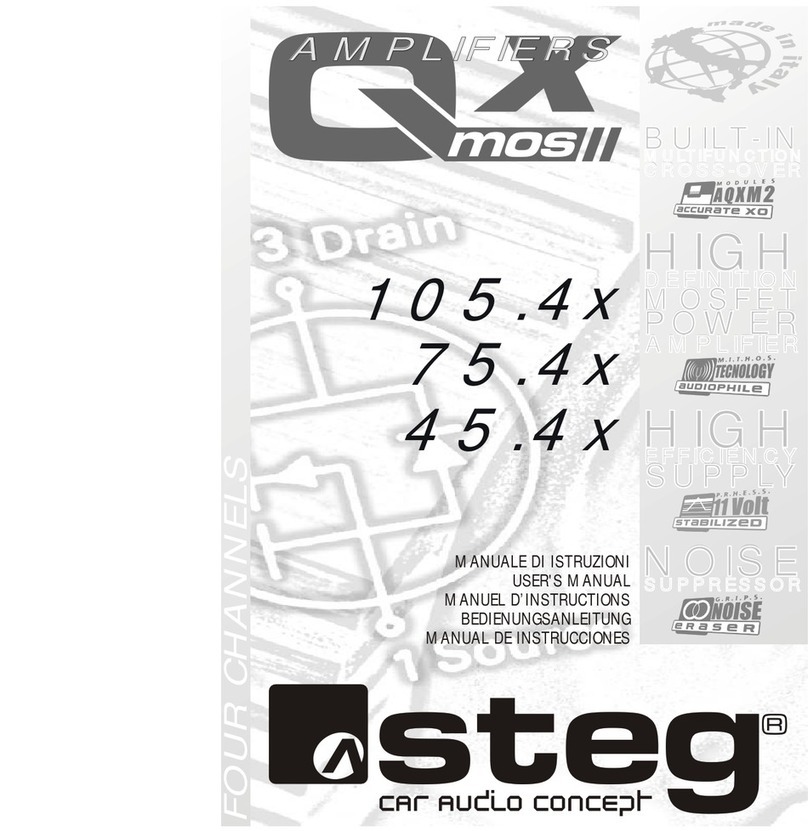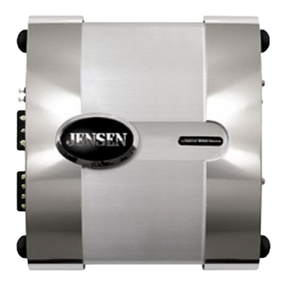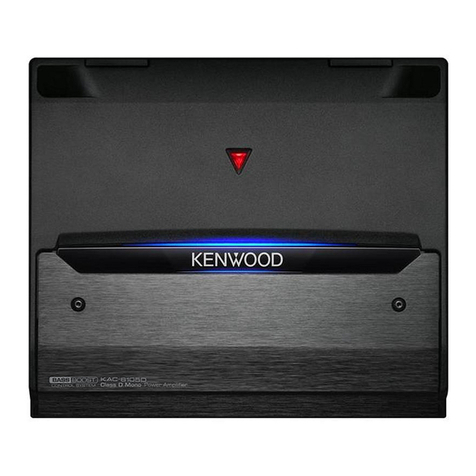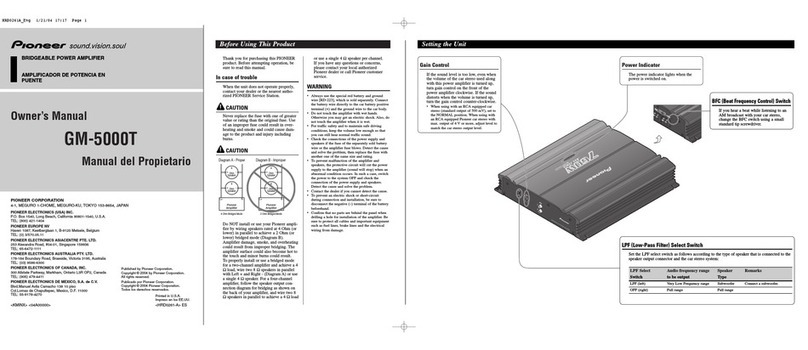BASSFACE DB4.4 User manual

DB4.4 Class A/B 4/3/2 Channel
Bridgeable Stereo 12v Power Amplifier
840w Verified RMS Power Output
Instruction manual

Thank you for choosing Bassface. From the simplest connector to our top of the range
amplifier - every element of these products has been designed to give you the best possible
performance for your money. Please take the time to read these instructions carefully as
they contain useful and important information. Modern high power audio systems can
generate voltages at the speaker similar to mains operated equipment – for some reason
everyone seems to ignore or forget this. Your wiring needs to be good to be safe. Please
remember this and take your time. Please exercise caution when setting volume levels –
powerful audio equipment can easily produce enough sound to permanently damage
hearing. Remember that audio competitors use ear protection when operating and
competing. Do remember that incorrect installation or abuse is not covered under warranty
– please make sure that your installation and any partnered product is suitable and
compatible. If you are unsure please seek qualified advice before proceeding. Always use
appropriate hand and eye protection when working with tools, and always work within your
capabilties as an installer. We offer a 12 month manufacturer warranty via your distributor
or retailer. Please retain your purchase receipt as proof of purchase. Please note that
Bassface operates a policy of continuous product development and we reserve the right to
change specification without prior notice. You can follow our process on our website by
reviewing the version history information.
Please note that we sometimes include information inside these manuals which we feel is of
potential value to the client on related subjects such as conversion charts, capacitance
values or wiring diagrams. Please feel free to copy any of this information since it is in the
public domain.
DB1.6 and will most likely not fit other iterations of the product.
The first step when installing an amplifier is to lubricate the terminals. The reason for this is
that sometimes, the plating applied to the screws can rub off slightly in the threads,
causing binding. This can then result in damaged threads and/or rounded screw heads. We
recommend the use of a medium thickness general purpose oil. In the UK there is a product
known as "3 in 1" oil which we like to use in the workshop, but any reasonably thick,
decently penetrating oil will work. We do not recommend the use of spray lubricants for this
job because they are too thin, wont penetrate the threads and can contaminate the
cosmetic surface of the product. Also, whilst it might sound like a simple and obvious thing
to say, please make sure that you use the correct allen key or screwdriver when operating
the amp terminals. The screws are made from relatively soft material, and can very easily
become rounded and damaged over time. We see this ALL the time in our repair centre, so
we KNOW that some of you don't read these manuals! Thanks for being one of the careful
ones.
Once your power cable, RCA and remote lead are all securely running through the car to
where you want the amp and the earth wire is fastened securely, somewhere close to the
amp, you can fit the amplifier. If applicable don’t forget to fit the amplifier remote control
wire and any speaker wires running forwards at the same time.
The amp should be mounted on a solid surface such as a boot floor. Wherever you do
choose to mount the amp, it needs sufficient ventilation; 2-3” around will be enough. We do

not recommend mounting an amplifier on a bass box as the vibrations can cause damage
to the internals of the amplifier over time.
You need to ensure that the load you subject your amplifier to is within specification and of
a sensible nature and that you have the appropriate cooling where applicable. It is your
responsibility to ensure the amp is kept at a sensible working temperature. Vertical
mounting or “hot boxing” can cause severe damage to the amplifier. Also take care
mounting an amp onto a board that has been covered in carpet. This can restrict airflow
under the amplifier, limiting the amount of convection cooling that can be achieved and
insulating the amplifier underneath which can build up heat inside the amp. For
installations that are space compromised the installer can add small PC style fans to
circulate air.
When choosing a speaker impedance remember that bridging a pair of output halves the
impedance – So a 4 ohm woofer bridged the amp sees 2 ohms per side. Thus to run a 2
ohm load on a bridged amplifier it must be capable of seeing only 1 ohm per side.
Also please remember that it is bad practice to run only "half" of a 4 channel amplifier and
leave the other "half" not connected to anything. This can cause the amplifier to fail on the
undriven channels over time. If you want to run only 2 speakers from a 4 channel amplifier
always bridge the outputs so that there is load on all four.
Time to lay on some power. Connect the earth first, then 12V power, then remote. Then

connect in the RCA cables and you can move onto setting up sound controls on the
amplifier. This description covers the principles of operation – for specific instructions refer
to the set up notes for the exact model you are working with.
It's also worth mentioning at this point that running audio into the amp but no speaker
attached can seriously damage your amplifier.
Setting the “Gain” or “level” on the amp is a crucial aspect and needs to be done with care,
otherwise you can easily damage your equipment. Before we move onto this we need to be
sure the crossover settings are right for the application.
Crossover settings
If you have an active crossover elsewhere in your system (such as the head unit) then you
may wish to set the crossover switch on the amp to OFF/FULL RANGE. Otherwise, in most
cases, this must be set to ON and the controls adjusted appropriately.
For subwoofer installation and setup we recommend a LPF of about 100hz initially as an
excellent starting point for most car woofers. Try 80Hz and 120Hz too – you will notice the
sound change. If you are running a 15 inch woofer then you will want to be looking at a
lower crossover frequency (like 80Hz) – if it’s an 8 inch driver then you may want to go up
to 120, 150 or even higher.

For other speakers if you are using a woofer, try to keep the HPF the same as the woofer
LPF. If you are using no woofer then a full range setting might be more appropriate. A
typical six inch driver will play from 100Hz and up. A four inch driver around 200Hz and up.
Once your crossover settings are set up, you can move on to the gain or “Level”. Before
you do anything else, please ensure that any bass boost controls on the head unit or
amplifier are set to 0 / flat / switched off. We also suggest you turn the bass remote level to
a mid setting to allow adjustment later to taste.
For the Bandpass settings, you switch the crossover into BPF mode. Then adjust the LPF
and HPF to the appropriate setting but please bear in mind that the LPF and HPF function
SWAP PLACES (!) IN BPF mode! So to set a filter of 40-3000, for example, you would set the
LPF to 40 (which actually acts as HPF) and the HPF to 3Khz (which actually acts as LPF)
Gain / Level adjustment
Now it is time to disconnect all other subwoofers or speakers so that you can hear only the
speakers powered by this part of this amplifier. Next, turn the level on the amp all the way
down. Choose some music that you’re not particularly keen on that has a good range of
bass, treble and vocals (helps not to get lost in the music whilst you work on the system.)
Then go to your head unit and gradually turn up the volume until you begin to hear slight
distortion from the driver. This is normally about ¾ the way up the scale. This is the

maximum setting that you will EVER use from now on – make a mental note of it. Next, turn
the head unit down from here by around ¼. This builds in a little bit of “headroom” so
should you have a track that is recorded quieter than the others or is at a lower bit rate,
you can boost the volume without pushing anything into distortion.
Once the volume is set on the head unit, go to the amplifier and slowly start to turn the
“Level” knob up, keep going till it is at a level you are happy with (that isn’t going to deafen
you!) or until your driver(s) are just about to distort. If they do start to distort, turn back
down till they sound perfectly clear.
One thing that you need to learn is how to actually hear a speaker “distort”; you may hear
a cracking, a metallic slapping sound or a rattle as well as just that thrashing distorted
tone. It is CRITICAL that you detect this sound and back the amp off to stop it NOW before
you damage something/everything.
Table of contents
Other BASSFACE Car Amplifier manuals
